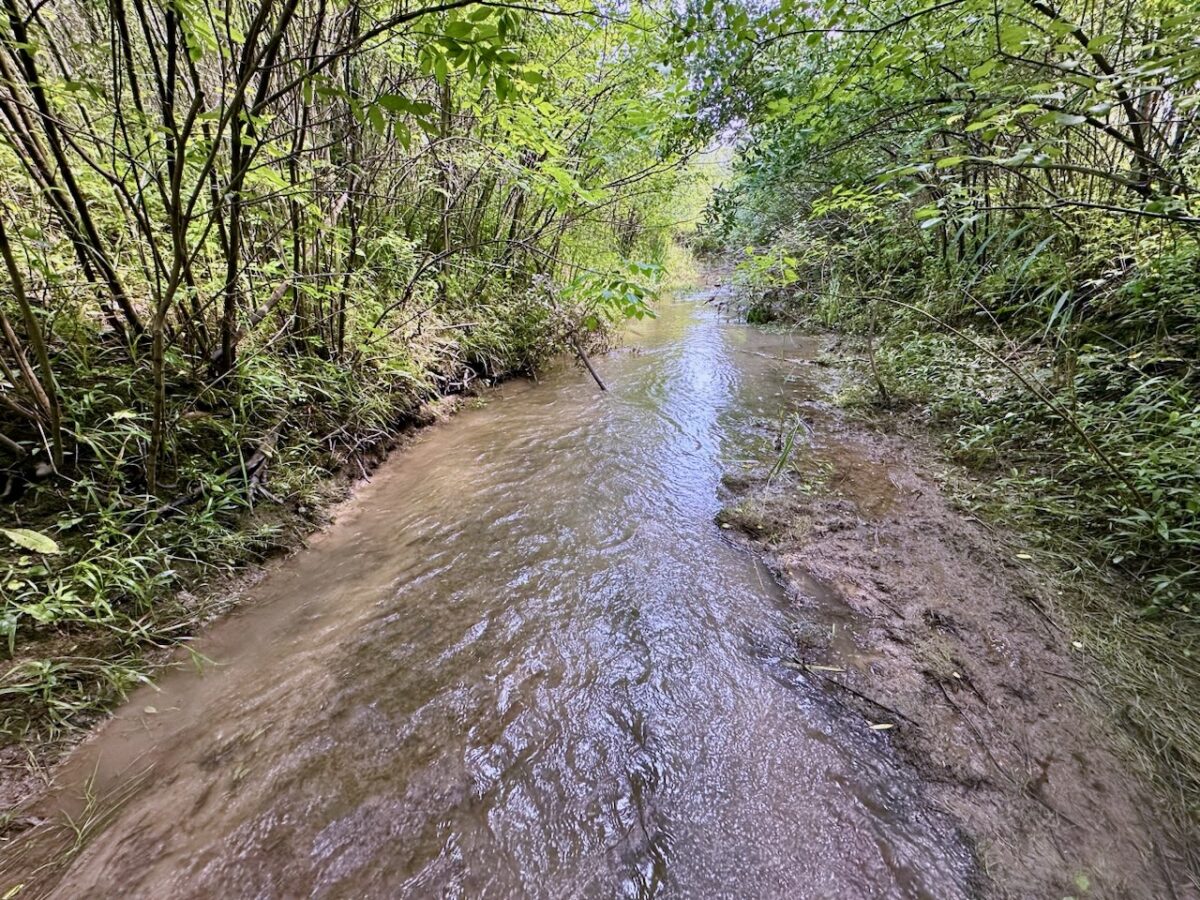Overview:
-A Stellantis development in Van Buren Township is seeking a permit from the state to clear roughly 9 acres of wetlands.
-"Healthy wetlands are giant sponges that hold water and prevent flooding," says Sally Petrella, watershed ecologist with the nonprofit Friends of the Rouge.
-Fifty percent of the site's wetlands would remain as green space, according to a Stellantis development partner.
A Stellantis auto parts distribution hub project in Van Buren Township is drawing scrutiny from conservationists who say the planned destruction of wetlands on the site will contribute to flooding along the Lower River Rouge.
The more than 2 million square foot warehouse would employ 488 Michiganders, according to project developers who spoke at a Tuesday wetland permit hearing hosted by Michigan’s Department of Environment, Great Lakes, and Energy.
The project would also clear roughly 9 acres of wetlands in the Lower River Rouge watershed and fill part of the flood plain with over 5,000 yards of soil.
The project represents a $388 million investment and is expected to open in 2027, according to Stellantis.
Draining wetlands can increase buildable land. It also reduces the land available to temporarily sequester rainwater, instead sending it into sewers and waterways where it can contribute to flooding.

During the Tuesday hearing, Manny Torgow, a project developer with Stellantis development partner Sterling Group, underlined efforts to protect wetlands at the 350-acre site near on Ecorse Road across from Willow Run airport. Three percent of the site’s wetlands would be disturbed and 50% would remain as green space, he said.
Sterling Group and Hillwood Development are developing the site in a joint venture, according to Crain’s Detroit Business, with a 20-year lease to Stellantis planned.
Environmental advocates questioned why EGLE would allow more wetlands to be destroyed in Wayne County. The area lost around 90% of its historic wetlands, according to the Wayne County Conservation District, with some saying the number is even higher.
Public comment on the permit ends next week. EGLE will continue to accept and review comments up until it makes a final decision, said Robert Primeau of EGLE’s Water Resources Division.
‘Healthy wetlands are giant sponges’
Heavy rains in recent years have led to flooding and flood warnings along the Lower River Rouge in Inkster and Dearborn.
As part of its permit application, Hillwood Development proposed purchasing wetland mitigation credits in the River Rouge watershed that could be used to establish new wetlands.
These credits would not necessarily be used in the Lower River Rouge, EGLE spokesperson Jeff Johnston said. This means the credits may not offset flooding impacts for this branch of the river, which runs roughly from Canton Township to Dearborn.
The Sterling Group and Hillwood Development declined to comment for this story.
“Healthy wetlands are giant sponges that hold water and prevent flooding,” Sally Petrella, watershed ecologist with the nonprofit Friends of the Rouge, said on Tuesday.
“Destroying 9 acres of wetland and altering 104 acres of wetland would only increase flooding.”
Stellantis spokesperson Frank Matyok told Planet Detroit that “Stellantis, in collaboration with the site developer, will work closely with EGLE to adhere to all applicable regulations. Any required wetland mitigation will be performed in accordance with EGLE guidelines.”
Project sparks concern over imperiled wetlands, endangered species
Regulators need to identify any rare or imperiled wetlands on the site that may require protection, Connie Boris, executive director of the Wayne County Conservation District of Michigan said during public comments Tuesday. The agency should also attempt to identify endangered species on the property, including the northern Long-eared Bat and Indiana bat, she said.
Both species have been observed in nearby Washtenaw County in the last two decades, according to the Michigan Natural Features Inventory, which catalogs and provides expertise on the state’s natural habitats.
Another Ecorse Road property, roughly 3 1/2 miles from the Stellantis site, was home to one of the state’s last remaining wet-mesic flatwoods, a rare ecosystem that was once common in the Detroit area. The company Waste Management is clearing this area to expand a nearby landfill.
Boris suggested the Michigan Natural Features Inventory could undertake the wetland analysis or the conservation district could support the effort.
Wetlands rules face rollback under Trump: Great Lakes pollution next?
Michigan will retain more water quality protections than many states but could still be impacted by pollution from other states or changes to state law.
Who is working to preserve and restore wetlands in Metro Detroit?
Organizations like watershed councils, land conservancies and government agencies are protecting wetlands in Metro Detroit to preserve wildlife habitats, improve water quality and reduce flooding risks.
Meet the man who has been cleaning the Rouge River for 35 years
For over 35 years, Bill Craig has championed the Rouge River’s restoration, mobilizing volunteers to clean its waters and inspiring future generations to safeguard the environment.
Can Wayne County afford to lose more wetlands?
Environmental advocates called attention on Tuesday to the scale of wetland loss in Wayne County and how this contributes to flooding, with climate-driven storms making the problem worse.
Lauren Eaton, monitoring manager with Friends of the Rouge, said mitigation efforts outside of the Lower River Rouge watershed won’t help with flooding in this area.
The Southeast Michigan Council of Governments’ flood risk mapping tool shows nearby portions of Ecorse and Denton roads are already at medium risk for flooding, with portions of Michigan Avenue to the northeast at high risk.
Nicole Marcot, a board member with the Wayne conservation district, said she’s concerned that additional land could be developed at the site in the future, adding that a verbal commitment from the developers is insufficient.
Petrella, with Friends of the Rouge, said there are plenty of alternative development sites that wouldn’t require destroying wetlands.
“We’ve already lost 98% of our wetlands,” she said. “We cannot afford to lose 1 acre more.”





